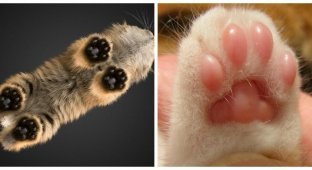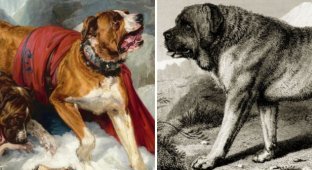Spitting dogs - living kitchen mechanisms and victims of human ingenuity (8 photos)
Picture this: the end of the 19th century, a cozy hotel somewhere in Wales. People have gathered at tables in the hall, drinking, smoking, exchanging the latest gossip. Smoke, fragments of phrases, the aroma of roasting meat are in the air. Logs are crackling in the fireplace, a woman is watching the spit... but the real work is behind her. 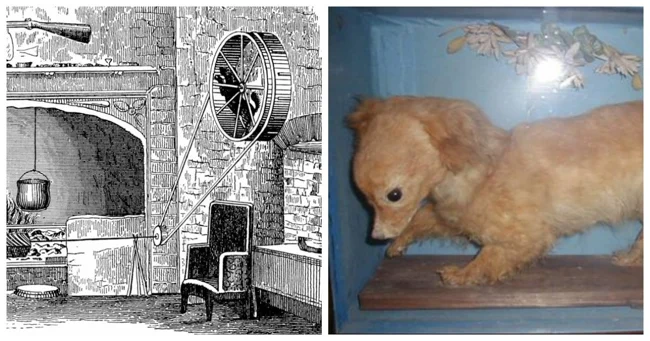
A small dog is running in a wooden wheel suspended from the ceiling. Its paws are flashing like a hamster's. This is a spit (kitchen, cook) dog. Short legs, a long body, a massive head and drooping ears - its appearance is not the most attractive, but it is ideal for an endless round of work.
Slave Labor 
Illustration from Henry Wigstead's book "Notes on a Tour to North and South Wales in 1797". 1800
The main task of these animals was simple: to turn the spit on which the meat was cooked. Before the advent of machines, this tedious work was done by children - often beggars, orphans from orphanages. But once people noticed that dogs could do the same, children were replaced by four-legged assistants.
The technology was cruel: a wheel, reminiscent of a hamster wheel, was connected by a chain to a spit. The faster the dog ran, the more evenly the meat was fried. The wheel was moved away from the fire so that the dogs would not suffocate from the heat. This was the only form of "mercy". 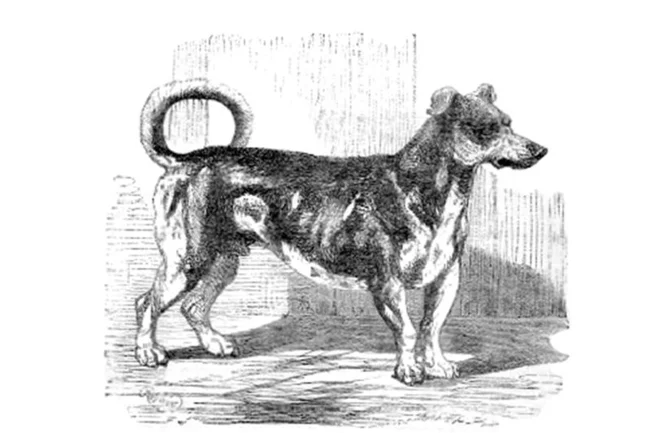
The dogs lived in a kitchen hellish climate: they were beaten, they were shouted at, they had coals thrown at them to make them run faster. They were not pets, but part of the machine.
Often the dogs worked in pairs: one rested, the other ran. And these dogs had an excellent sense of time. As John George Wood wrote in his book Animals in Pictures (1853):
If they were not released from work at the appointed time, they would simply jump out of the wheel and push their comrade in to finish the job. 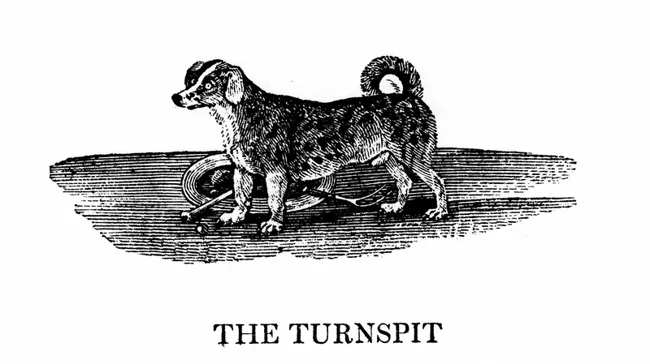
But this caused conflicts. Quarrels between dogs were frequent. Each accused the other of being lazy or eating more. Sometimes fights ended in death.
One such case is described in the book by John Cordy Jefferson:
In Paris, in the kitchen of the Duc de Lianfort, a dog escaped from a wheel and killed his neighbor because he did not want to work. And in the Jesuit college of La Flèche, a dog, angry at being forced to work in place of a vacationer, mauled a traitor to death immediately after escaping.
Not only kitchen workers 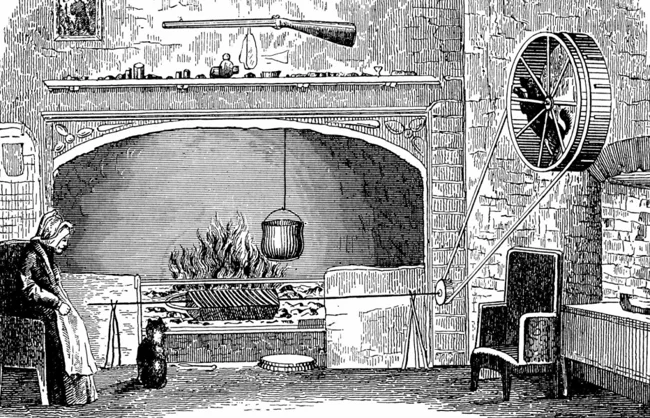
Spit dogs worked not only in the kitchen. They were used to drive fruit presses, butter churns, water pumps, and grain mills. 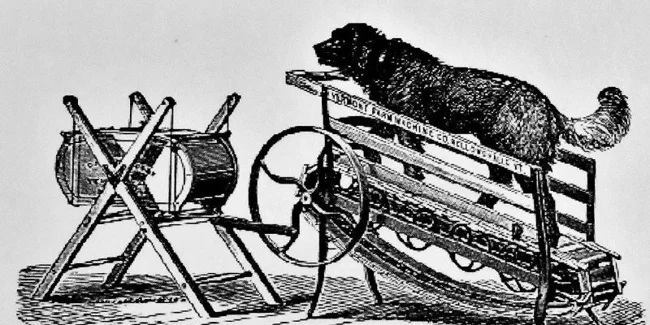
And on Sundays? On Sundays, the whole parish took them to church, because such shorties warmed their feet perfectly under the benches.
The Creation of the Breed and Its Disappearance 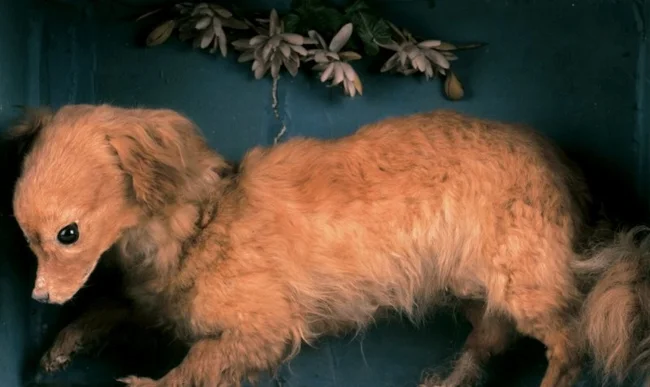
A stuffed Whiskey, the last spitting dog, is on display at the Abergavenny Museum in Wales
It was a separate breed of Canis lupus familiaris, specially bred by British breeders. It had to be small enough to fit on the wheel, strong and hardy, trainable and patient.
By 1750, such dogs could be found in almost every home in Britain. But by the end of the 19th century, they were replaced by mechanical devices - millstones driven by steam, weights or springs. 
Welsh Corgi - Likely Descendant of Spit Dogs
The dogs became unnecessary. The breed disappeared. Although some historians believe that it could have become the ancestor of modern breeds such as the Welsh Corgi or Glen of Imaal Terrier.
Today, the only surviving stuffed spit dog can be seen in a small museum in Abergavenny Castle in Wales.












